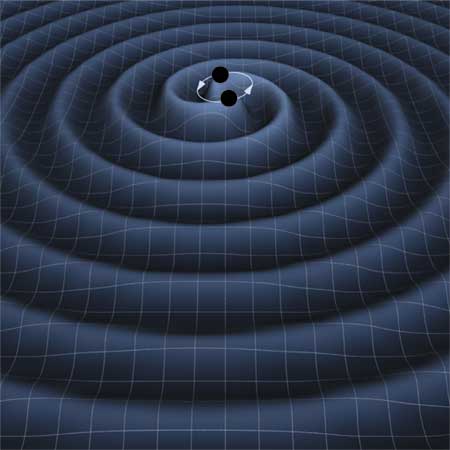Gravitational waves
In the theory of Einstein, gravity manifests itself by means of a dynamical space and time;
according to this vision, gravitational waves (GW) can be thought as "ripples" of space-time.

More concretely, the effect of a gravitational wave passing by is an oscillatory (tiny) variation of the distance between two free-falling bodies. It is by measuring such variations through the km-sized interferometers LIGO and VIRGO, that scientists have recently detected GW's.
GW are produced by enormous quantities of accelerating mass, occurring in such events as supernovae explosions and binary mergers, but also in violent phenomena that took place in the earliest epochs of the Universe.
Gravitational waves had already been indirectly observed in the Nobel Prize-awarded work by Hulse-Taylor. This has provided a precise confirmation of Einstein's theory of General Relativity. The recent direct detection (but also their possible indirect observation in the CMB) will provide even more stringent test on General Relativity as well as a completely new window on our Universe: as ordinary matter is basically transparent to GW's, we can in fact use them to get informations from regions inaccessible to photon-based observations, like for example the internal composition of stars, or the state of the Universe before the CMB epoch.
Pages
Address
Département de Physique Théorique
Université de Genève
24, quai Ernest Ansermet
1211 Genève 4
Switzerland
Directions & contact



